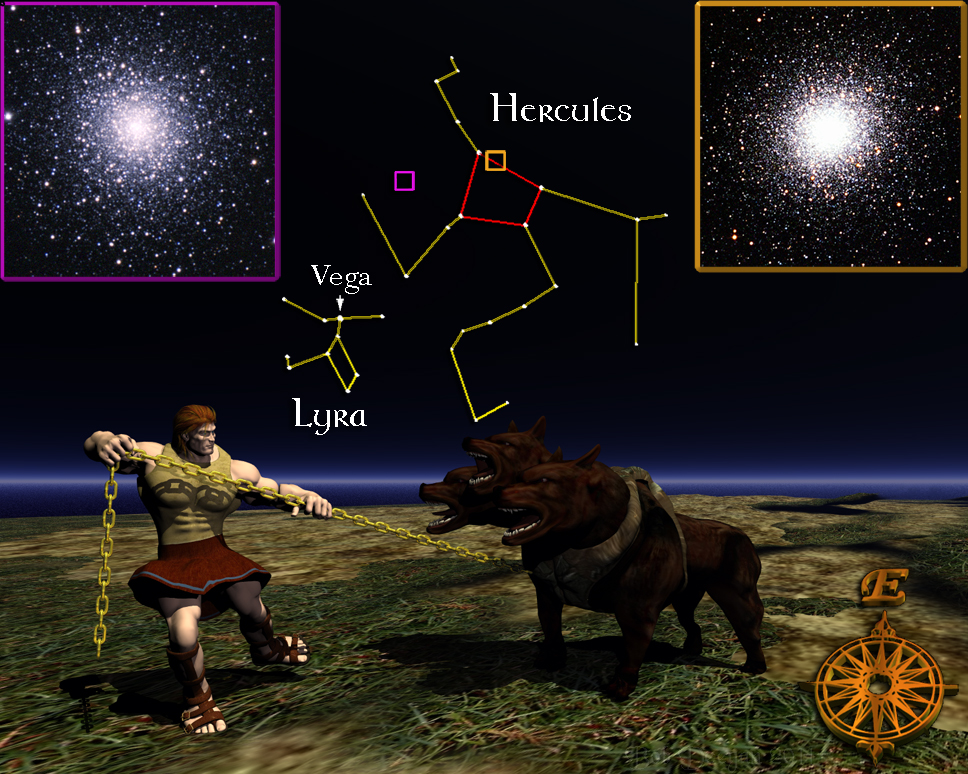
For the week including April 1, 2011

HERCULES’ CLUSTERS
Hercules is one of the most famous characters that have come to us from Greek mythology and the stories of his Twelve Labors are favorites among young readers. The constellation that represents Hercules is spread over a large area of sky and some old star maps refer to his Twelfth Labor – the retrieval of Cerberus, the three-headed dog that guarded the gates of Hades. Finding the constellation of Hercules has always been a bit of a problem because it contains no conspicuously bright stars. Fortunately there are plenty of celestial landmarks surrounding Hercules that help us to locate him. Follow the guides and they’ll lead you right to the legendary strongman.
Turning toward the northeast horizon after 10:00pm, the first thing you’ll notice in the sky is a brilliant blue-white star. This is Vega in the constellation of Lyra, the Lyre or harp. Vega is the fifth brightest star in the sky and takes its name from ancient Arabic for “The Swooping Eagle”, a designation they gave to the entire constellation. Vega, at almost thirty light years distant, is a convenient landmark for a spot in space called the Solar Apex. The Sun, like all stars, is traveling in space and the direction it’s moving in (the Solar Apex) is toward Vega. This isn’t to say that anybody should watch to see if Vega gets bigger as we get closer. Since the Earth speeds along at only twelve miles-per-second, it’ll take us 450,000 years to reach the vicinity of Vega.
Scanning diagonally to the right of the Lyre, we come to Hercules. You can find your way to the heart of the constellation by locating another landmark called the Keystone, a group of four stars that look like the wedge-shaped central stone in an arch (highlighted in red in our illustration).
If you look closely at the Keystone on a dark, clear night you will see a small blur of light near the end of its longest side. This blur is M13, a ball-shaped cluster of a million stars lying almost 25,000 light years away, beyond the plane of our galaxy. Visible in a telescope or binoculars and shown in the photograph at upper left, the density of M13 increases to several stars per cubic light year near its center. This volume is over 500 times more crowded than the neighborhood of our Sun. If our planet orbited a star in the region of M13, our night sky would be crammed full of thousands of stars as bright as the Moon! Shown in the photograph at upper right, M13 is one of the finest objects to view with a telescope or binoculars. And while you’ve got your binoculars out, look for the smaller globular cluster M92 off to the left. This wonderful cluster, which lies about 26,000 light-years away, is often overlooked in favor of its more impressive neighbor. Shown in the photograph at upper left, it will reward a search by the interested amateur.
The photographs of the globular clusters M13 and M92 are from the National Optical Astronomy Observatory.
Unless otherwise indicated, all content of this web site is the copyright of Robert Deegan and all rights are reserved.
For more information, or to comment, please contact: Bob@NightSkies.org